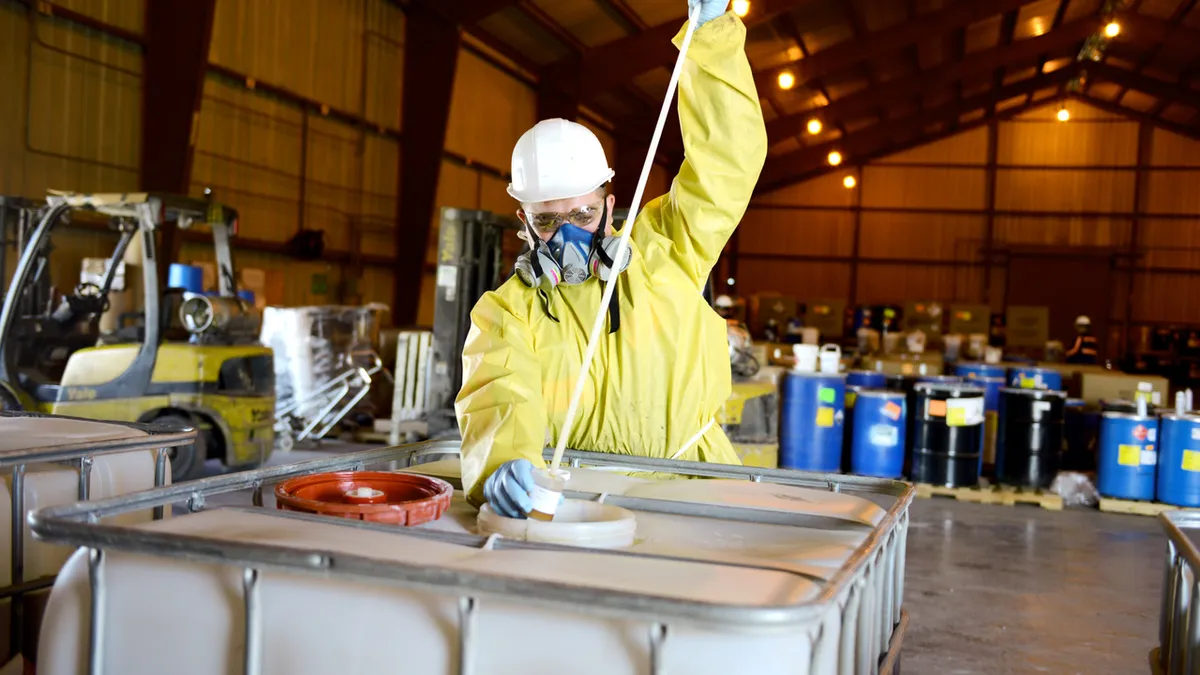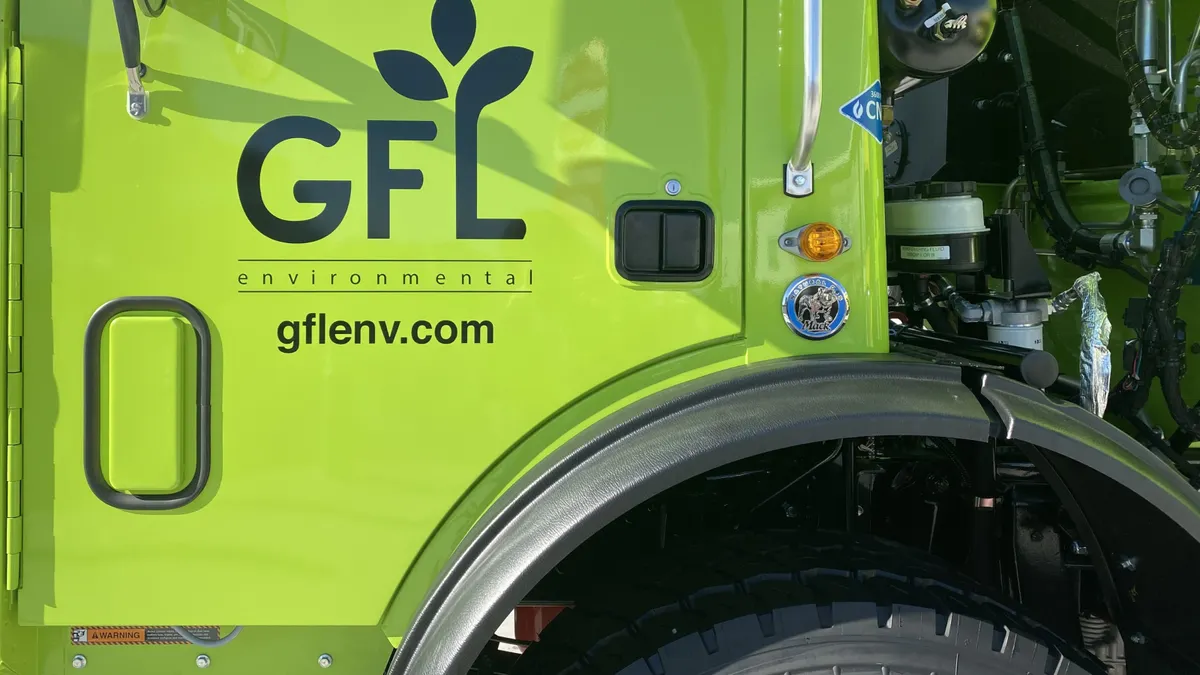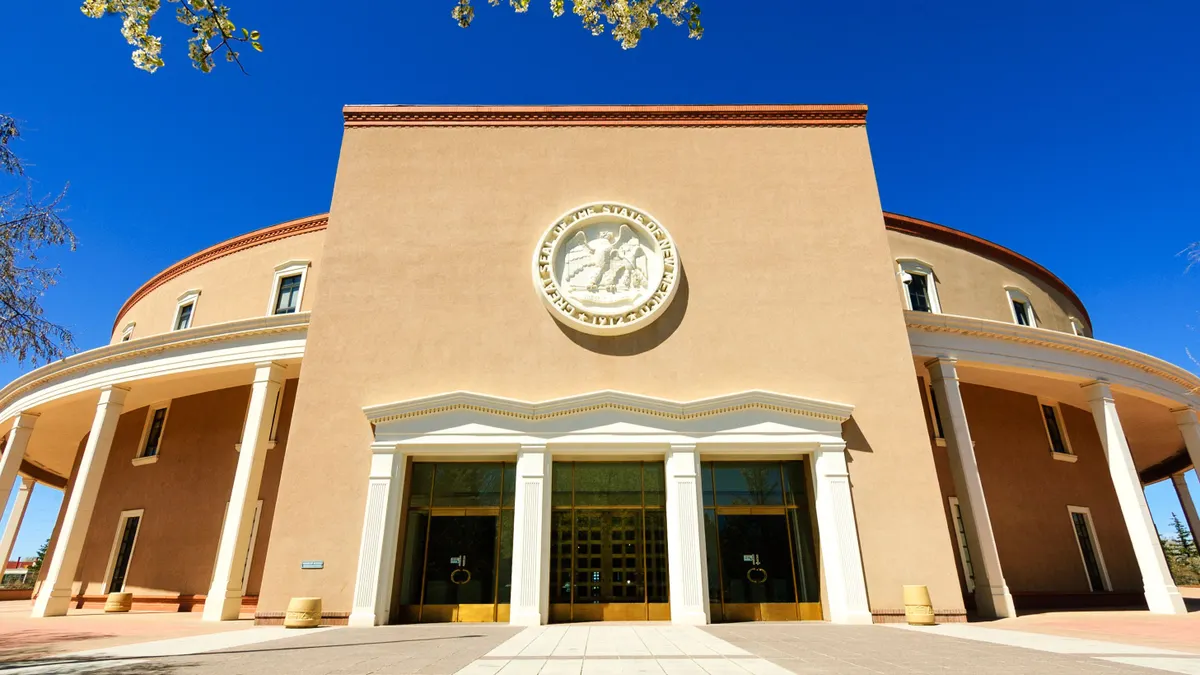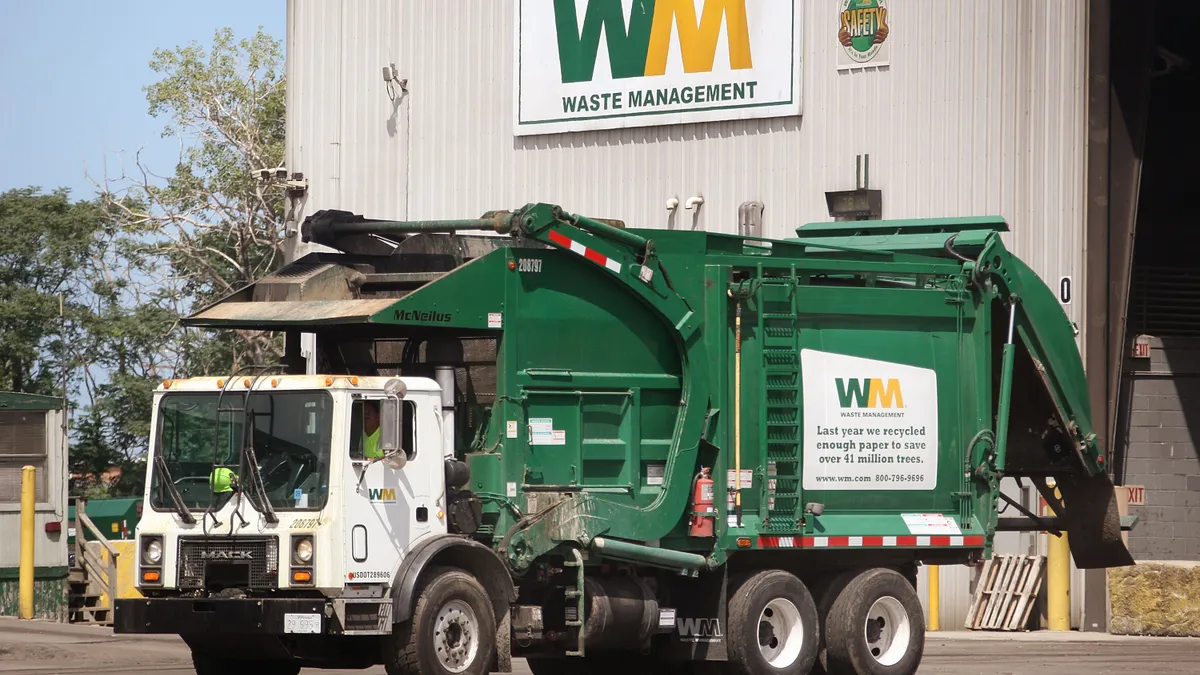Clean Earth, a division of Harsco, has navigated a historically eventful 2020 while growing what its president describes as essentially a whole new company.
David Stanton joined the company in March after a stint as the CEO of SUEZ Utility Holdings, following the announcement that Harsco would acquire Stericycle's Environmental Solutions (ESOL) business for $462.5 million. Harsco had just acquired Clean Earth for $625 million in June 2019, following another 2018 acquisition that was part of a pivot into becoming a "single thesis environmental services company" under CEO Nick Grasberger.
The combination of Clean Earth and ESOL happened as the pandemic's initial effects unfolded across multiple business lines. Major retail accounts such as Amazon, Walmart, Home Depot and CVS spiked as others dropped. An estimated 20,000 hospital and medical clients saw certain waste streams plummet. Municipal hazardous waste events were widely canceled. Construction and soil remediation projects took a major hit.
Harsco reported steady improvement in its third quarter earnings, with $194 million of its $509 million in revenue from Clean Earth, but challenges continue. Waste Dive recently spoke with Stanton about the company's progress, the incoming Biden administration and a potential role in managing PFAS.
This interview has been edited for brevity and clarity.
WASTE DIVE: How has the pandemic affected the streams Clean Earth manages? Are there any trends in how this fits into the economic recovery overall?
DAVID STANTON: There's certain types of retail that have really done an unprecedented amount of growth this year. At the same time, we've had retail clients that have been completely shut down for three or four months of the year, where our work went to zero and we actually just had nothing to do for a period of time.
The good news on retail is I think pretty much everybody's opened back up... So maybe we're making the same number of stops that we were pre-pandemic, but the volume might be down 25%. But when you add it up with the accounts that are doing really well, it's a pretty balanced recovery for retail from our portfolio's point of view.
On the medical side, you would have thought it would have been a boom through this period of time. But with elective surgeries essentially being canceled at hospitals for as much as four to six months in different regions this year the actual work that hospitals have been doing has gone down tremendously [in terms of volumes managed by Clean Earth]. It's been sort of a dip and coming back to normal now.
I would say generally speaking, our industrial accounts [examples of this category include Boeing and Procter & Gamble] are down 15-20% at the low point, and coming back from that right now.
Interestingly, most towns and cities have more or less slowed down or canceled the collection of household hazardous waste and universal waste. But when we do finally get to go in and work with them to collect these materials we're collecting huge volumes. Because people aren't throwing it away, they're just accumulating more stuff in their basement.
The final one that is the most difficult for us to monitor is the regional impacts on non-residential construction and remediation. We actually see this as the one sector that probably is going to have a slower recovery than all the others. It actually lagged the shutdown, because there were a lot of projects in progress that had to complete through the pandemic, or even if they shut down they immediately started back up to complete the projects. For new permits, new construction projects, new infrastructure projects, we've seen a real slowdown on the front end of that business. It's probably going to affect us for a little while.
Now that we're many months into this how is the team holding up? Has anyone been furloughed?
STANTON: We have about 3,300 employees in this part of the business and Harsco overall has [approximately 14,000 employees]. So we had a very minor number of furloughs, I would say less than 150 as a result of the shutdowns in Clean Earth.
In the U.S., we did not have a very large furlough and we brought them back more or less within about two months. Most of it was related to the retail stoppage where we had just wholesale shutdown of retail facilities for a period of time.
We very early on came up with a set of guiding principles for the company to operate around, which were pretty rigorous....We really have not had virus outbreaks within any of our operations. Almost all of the impacts have been people getting the virus outside of the work environment, and either exposing our people at work and/or just getting sick and taking themselves out through the quarantine period.
Quite frankly, we all thought we would be largely coming out of it right now. Instead, we're now seeing a spike. We have the most cases of quarantine and active COVID cases since the outbreak right now. It's our peak moment. We try to educate our people to be as smart and safe as possible and then keep the workplaces safe.
It sounds like things are pretty far along on the integration of ESOL. How is the pandemic affecting the process, if at all?
STANTON: Technically it's an integration, but what I really like to say is we're bringing two companies together and forming a new company out of them. Clean Earth was originally a series of acquisitions done by private equity that we acquired. We bought a lot of good leadership, but not a big company infrastructure or organization. And then we sort of ripped ESOL out of Stericycle. We didn't take systems or back office or executive leadership. We just took the business unit. And so that part was a little messy.
We've created a new leadership team, we've come up with a new roadmap for technology and how we're going to use it and how it affects all parts of the business. Everybody at Clean Earth has new benefit packages, and new bonus plans, everything is new for everybody all at once. It has been kind of fun, because it is much more like creating a new business.
The only silver lining is that with COVID, while it's been difficult to maintain our level of service and provide good care for our customers it's also given us a bit of a quiet time in the market. We can be internally focused to get a lot of this knitting done that you usually have to do in the first six or nine months of building your leadership team and integrating the activities and that's gone extremely well. We're well ahead of the targets we set with the deal.
It's been mentioned before that Harsco may still do some tuck-ins here and there, but the near-term plan is to grow organically. In terms of your place in the market, how much more room is there to become an even more dominant player?
STANTON: If you look at just hazardous waste, we're already sort of number two on volume and revenue. And if you add in the other areas that we participate, it makes us a little unique but bigger. This is a relatively under-serviced sector of the market and there's two ways to grow.
Path number one is to win market share, and make sure you have your share of accounts. In some areas we have significant market share and significant account penetration, and other areas we're kind of weak. So making sure we're fully servicing all the regions with all our full capabilities is one avenue for growth.
The other is we see a lot of white space in this part of the market. A simple example is we recently [announced] we're going to hit 13 million aerosol cans recycled this year. We 100% recycle these cans. That's up 85% from five years ago... It's a one product kind of waste stream, but we do it well and we think that maybe only 5% or 10% of that market is being serviced right now. So as it opens up we're going to grow, and we probably have a couple dozen waste streams like that where we see a lot of white space in the market.
The premise is that one of the reasons people don't recycle or properly dispose of a lot of those types of products is it's kind of hard to do right now, and do it right. What we plan on doing with our footprint is really making over time – every year, every quarter, every month – some feature that makes it easier and easier and easier for our customers and clients to process those materials correctly.
Is it fair to say the uptick in interest around ESG reporting and investing, both for you and your customers, is a driving factor in getting more streams recycled?
STANTON: It definitely is. I joined [Clean Earth] from working for a big European company where these types of themes are well entrenched in the infrastructure and in the European markets. We're just beginning that process here. You already see the the big multinationals paying a lot of attention to it, and trying to take the steps to do it right, but in many categories there's just no infrastructure to do it.
We have the largest number of [federally permitted Treatment, Storage and Disposal Facilities] sites in the nation, which puts us closest to everybody. And there's opportunities to continue to fill gaps and holes there. But we think that gives us a unique footprint to service these markets. And then the flip side is a lot of what our customers and clients need for ESG is good reporting and good data, which is something else we plan on bringing to the market. Today, there's very little data tracking on the waste side in hazardous waste and that's a big opportunity as well.
In terms of your own operations, are there other opportunities you see for ESG or climate-related initiatives?
STANTON: We have a goal of reducing our CO2 footprint by 15% by 2025. So we're going through the process of getting a baseline of all the impact data we have site by site, finding ways to report that more automatically and directly, real-time.
Probably the biggest thing we're doing in that regard is really focusing on logistics, and the opportunity for route density and logistic improvements to reduce the number of miles that waste travels. We think that's an opportunity for just a better business, but also it'll probably be one of our biggest near-term contributors to our ESG goal.
With the new presidential administration coming in, do you foresee that accelerating demand for some of this work? Are there any other areas to keep in mind for what that could mean for Clean Earth?
STANTON: If I had a wish list, most of our markets really are driven by the state level of engagement in the regulation or the requirements and the speed at which the states adopt and enforce rules. Like with aerosol cans, we see a different rate of enforcement of the universal waste rule on aerosol cans.
So anything that would encourage more consistency across the states is beneficial to the environment and to the ESG cause. And it'd be nice to see the federal side play a role in pushing the states along to move quicker and adopt. Because a lot of that white space I'm talking about, the rules are already out there and they're just not promulgated in every state equally.
On the larger side is the emerging contaminant issues around PFAS and PFOA. There is no national guideline on that and states are taking steps to preempt the EPA or legislation out of Congress on PFAS and PFOA... We actually have a strategic plan to put in place the infrastructure to take PFOA-contaminated waste and manage them in certain categories of waste, but absent understanding what the regulation is how much are we going to invest and how much our customers going to trust any outlet or direction for that material?
In terms of having the regulatory certainty to invest, what made the first PFAS treatment system at one of your plants in Detroit make sense?
STANTON: So right now the primary source of impact is being felt at wastewater plants and water plants. And they're already taking steps in many regions to treat or remediate their product before people consume it or it's in the environment. It's a huge cost.
So we see two primary sources of PFAS and PFOA upstream. One is industrial wastewater discharge. There are businesses today dumping wastewater into their sewers, or directly into the environment, because they're not even required to test for PFAS and PFOA. They probably know it's there, but there's no requirement for them to do anything... So our idea with the plant in Michigan, [which] has some progressive rules to stop this, was if you have wastewater that you can't dump now, bring it to our site and we'll treat it for you.
The second issue is that if you've been dumping this material on the ground, or if you've been putting out fires at an emergency fire station or at an airport, you've been blowing this stuff out all the time. It is in the soils, and it has saturated the soils and it's leaching down into the aquifers and into the environment. We need to dig those soils up, process them and put them back to get rid of it so it doesn't have to be treated in other places.
So we have a whole infrastructure, at least on the Eastern Seaboard, that we are piloting and trying to get some permitting for to do the same type of process. It will take some regulation to make that become a viable market, but we're already set up to process it and handle it on a project basis and get project-level permitting data done.
Could you accept leachate?
STANTON: Absolutely. In fact, I would say leachate water is [one of our top sources] of water for the Detroit facility.
What are you doing with the biosolids?
STANTON: The final step that absorbs the PFOS and PFOA out of the water is activated carbon. And we're taking that activated carbon, reactivating it and the off gas from that goes into a high-temperature incinerator. There really is nothing you can do with PFAS and PFOA except incinerate it at high temperatures. It doesn't burn at low temperatures, but at high temperatures it burns quite well back to just natural organic compounds. So it has to be destroyed.
Do you see opportunity at a national level to be a solution for the solid waste industry?
STANTON: We've been talking to them, both Waste [Management] and Republic particularly, on the topic. Definitely.
In the last year or two it has really been one of the top topics we hear about as a concern for the industry.
STANTON: The EPA probably won't issue a standard for another three to five years. So it's highly likely that it would be a legislative standard... It could be we get something through Congress that actually sets a national standard on it, and then the EPA will be forced to promulgate some rules on the discharge side hopefully.
And it's a touchy topic. I don't think the landfill operators are excited about being regulated on this. However, if it is getting into the environment it's already impacting the water plants in many, many states so it's something they're going to have to deal with.


















